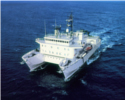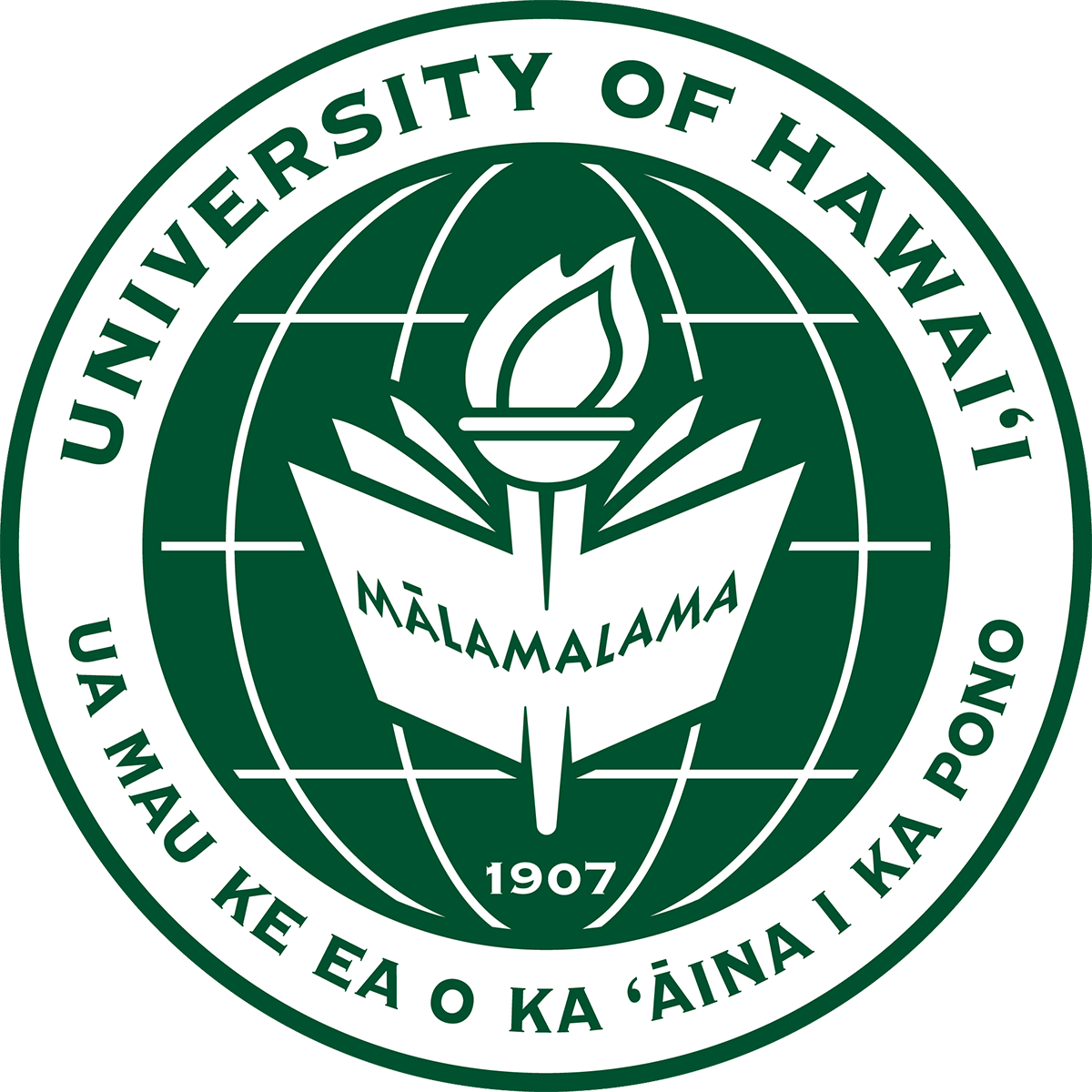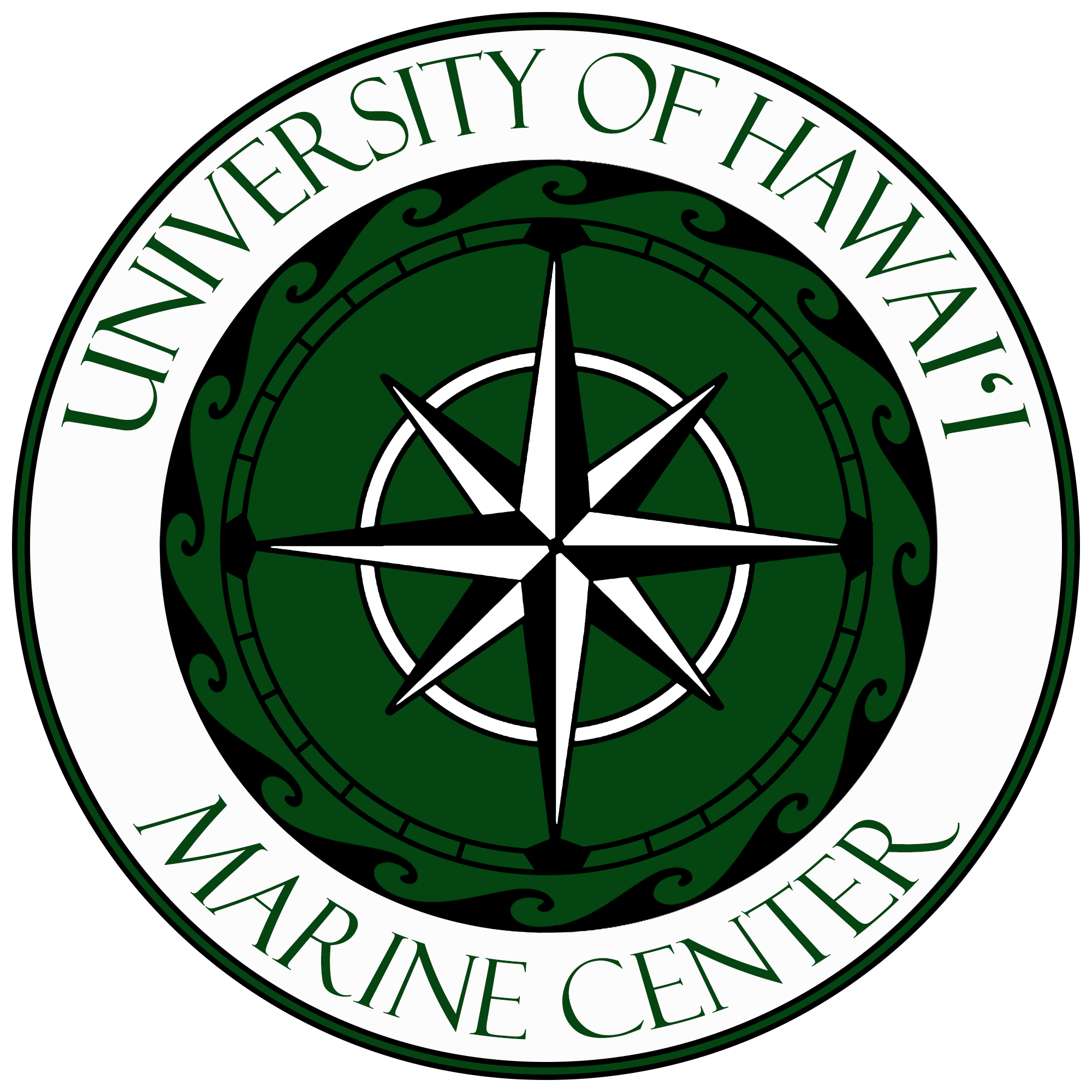The R/V Kilo Moana is a 186’ Small Waterplane Area Twin Hull (SWATH) vessel owned by the U.S. Navy and operated by the University of Hawaiʻi Marine Center. Because of the unique SWATH design, the Kilo Moana is a very stable and comfortable platform from which to conduct oceanographic research. The ship was designed as a multi-purpose oceanographic research vessel with extensive equipment for geophysical (2 multibeam echosounders, subbottom profiler, gravimeter and magnetometer), physical oceanographic (Doppler current profilers, CTDs, pCO2); meteorological and radioisotope research. Over 2500 sq. ft. of space is provided in 8 different laboratories and over 4000 sq. ft. of exterior working space is available on the aft main deck and the forward 01 deck. The Kilo Moana was built in 2001 and commissioned in 2002. The vessel operates out of Honolulu, Hawaiʻi, and has worked throughout the Pacific. The cruising speed is 12 kt., with a minimum speed of less than 1 kt. and station keeping supported by dynamic positioning.
Attention: Please review the UNOLS Safety Orientation video and Kilo Moana Safety Briefing prior to embarking on your next expedition. Thank you!

Quick Links:| Deck 03 | Deck 02 | Deck 01 | Main Deck| Platforms

03 DECK
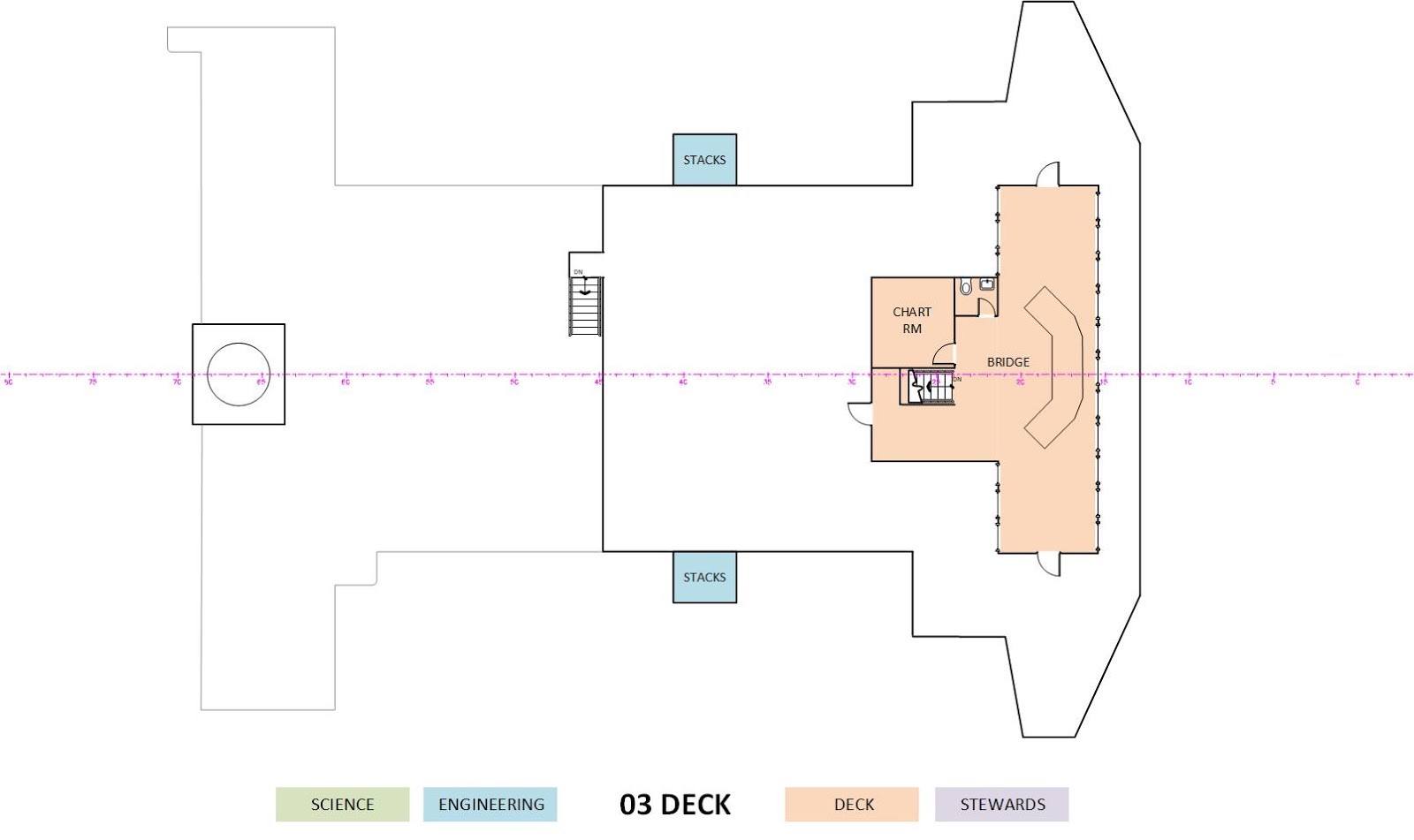
Bridge and Chart Room

The 03 deck houses the bridge and chartroom. Scientists are welcome on the bridge when operations permit during daylight hours, but there's limited space and not everyone can come at once. Traffic or ongoing operations my preclude your presence. No persons will be allowed on the bridge while the vessel is arriving or departing port or piers or maneuvering in close quarters.

02 DECK

The 02 deck aft is a good location to watch scientific operations that are taking place on the aft main deck. Inside is the conference room where the initial science party briefing takes place and can be used for science meetings while underway. Near the conference room are berthing spaces for ship’s officers and crew. Along the forward side of the deck are staterooms for the chief scientist, chief engineer, chief mate and the master.
Conference Room
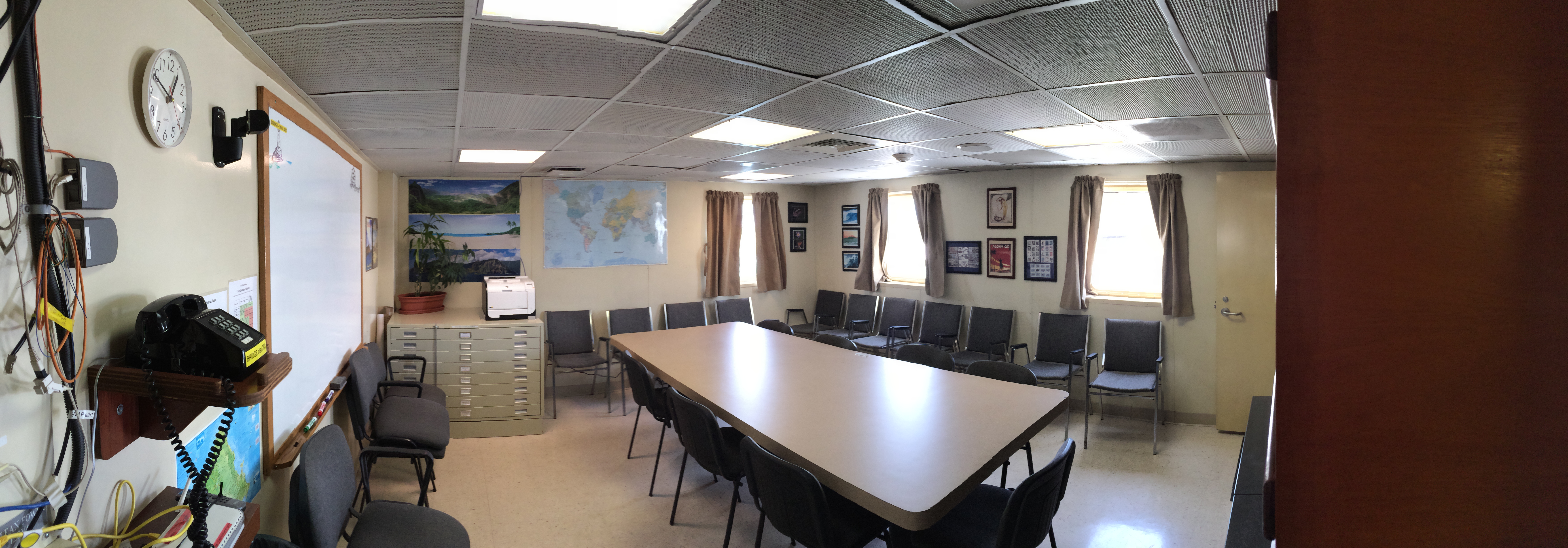
Conference room is for science team work and meetings. There are also basic medical supplies (bandages, antacids, seasickness pills, simple pain relievers, etc.) available for general use in the conference room.
270 sq. ft.
Medical Bay
The KM has a dedicated hospital area with two hospital beds, bathroom facilities, and medical supplies. At least two members of the crew are trained as Medical Person In Charge (MPIC). The Academic Research Fleet (UNOLS) including the UHMC subscribes to the George Washington University Maritime Medical service, which provides a team of physicians providing medical advice for remote locations and ships at sea.

01 DECK
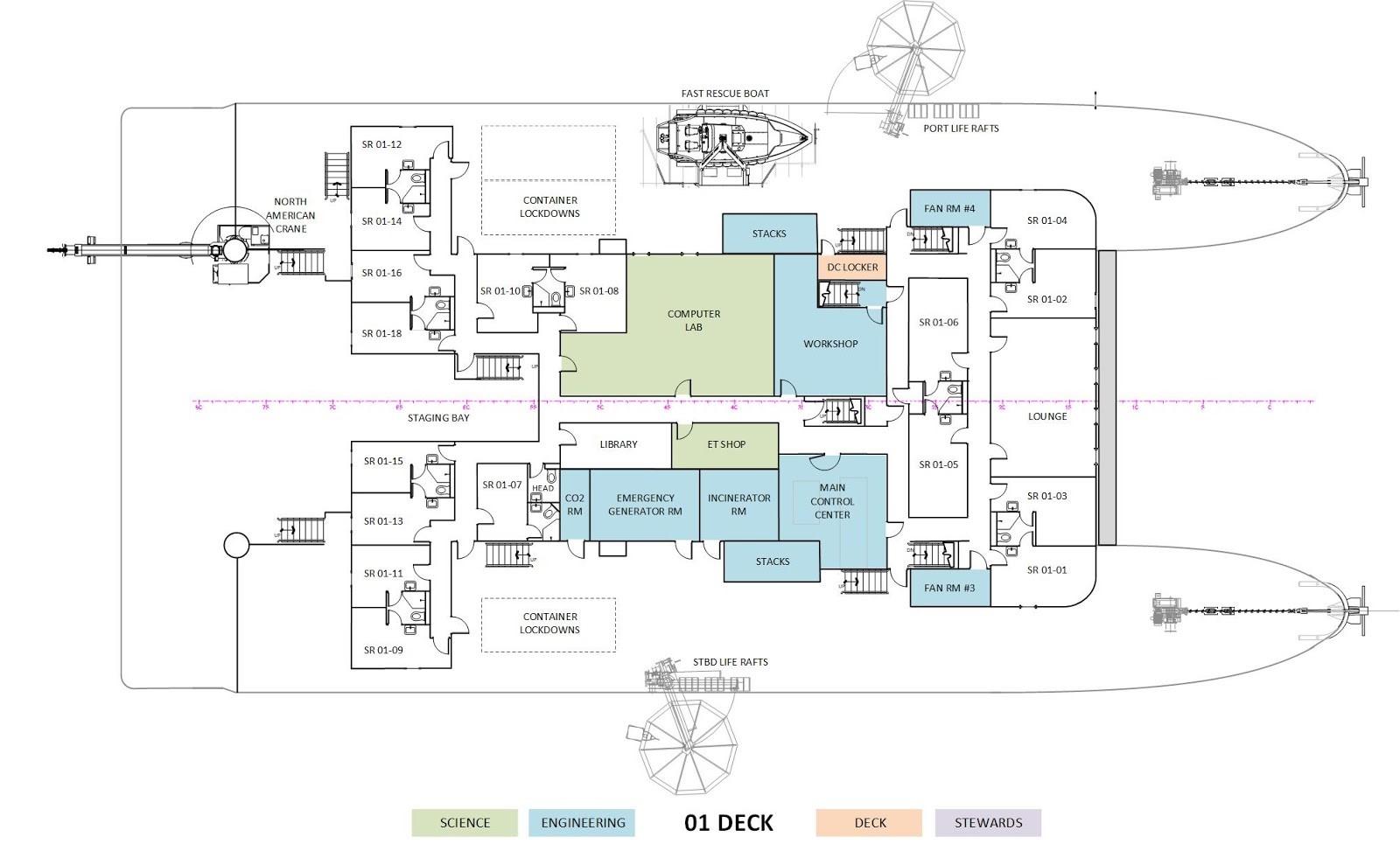
The KM’s 01 deck provides space for three scientific vans or containers and access to the fast rescue boat. When in port away from home, the ship is accessed via a gangway on the 01 deck near the portside container lockdowns. The life rafts are also on this deck. Inside are most of the scientific state rooms (aft), the computer lab and the ET shop, engineering spaces, the lounge and staterooms (forward) for crew and the marine techs.
Computer Lab

The computer lab is primarily the data control center of the KM. This is where acoustic, meteorological, and many other in-situ measurements are collected and stored on site. This is also where you will most likely find your shipboard techs if they aren’t on the back deck. The computer lab also is home to one of the ship’s network printers.
560 sq. ft.
Lounge and Library

The Ship’s Library houses a small collection of novels, reference texts, atlas and SDS sheets for your perusing pleasure. There are also two public computers in this space as well as a copy machine/network printer.

A wall of movies and games are available in the lounge. Anyone is welcome to use this space, but please be quiet and respectful.

Science Party Staterooms

Staterooms are located on decks 1 and 2 with a majority of the science party being housed in the aft rooms on deck 1. The layout may vary slightly, but all contain the same standard bunked beds, lockers, dresser, desk and sink. A head with shower and toilet is shared between two staterooms. Scientists are responsible for cleaning their own rooms before and after their expedition. Linens are provided and should be returned to the laundry room after the expedition.
MAIN DECK

The KM’s main deck aft is where equipment deployment and recovery and over-the-side sampling takes place. At homeport, the ship is accessed via a gangway on the main deck so this is, in effect, the “front door” of the vessel. The staging bay allows equipment to be moved from the main deck to a sheltered space. The staging bay is also the scientific party’s muster location for all drills and emergency musters. Several laboratories are clustered around the main deck and staging bay. Scientific storage space is forward of the staging bay. Forward of that are engineering spaces, the galley, the mess deck and food storage. The I-Met lab is on the main deck in the port hull.
Main Deck Laboratory Spaces
There are seven laboratory spaces aboard the KM. Most of these labs are adjacent to the main aft deck and staging bay. From port to starboard, these include Lab #2 (560 ft2 or 52 m2), Lab #1 (170 ft2 or 15 m2), the Chemistry Lab (290 ft2 or 27 m2), the Hydrographic Lab (290 ft2 or 27 m2), and the Wet Lab (320 ft2 or 30 m2). The Wet Lab has direct access to the aft main deck. All of these labs have sinks with both freshwater and underway sea water available. The Chemistry Lab is also equipped with a fume hood. The ship’s gravimeter is housed in a locked space forward of Lab #1.
I-Met Lab

The I-Met Lab is the forward most lab, just forward of the ship's gym. This lab is the first point of contact for the scientific seawater system. This lab houses some of the ship's underway systems, like the thermosalinograph, fluorometer, and pCO2 system. There is limited bench space in this lab for adding equipment. Please contact your shipboard techs early on in the pre-cruise planning process so that they can accommodate your bench space needs.
270 sq. ft.
Lab #1

Lab #1 is most often utilized as the CTD control center. A VHF radio is available in this room to maintain communications with the winch operator up in the Dog House or the Techs on the back deck. Other operations that require cable runs to the back deck will often use this lab because of an easily accessible pass-through in the aft bulkhead.
170 sq. ft.
Lab #2

Easily the largest lab on the KM, Lab #2 is a great multipurpose lab, complete with ice maker, sink, -80 freezer, D.I. and R.O. water makers, and an easily accessible pass through for cabling to the Staging Bay.
260 sq. ft.

An extension of Lab #2, Lab #2A is another large multipurpose space equipped with two sinks. This is also usually the location of one of the public wireless routers.
300 sq. ft.
Chem Lab

The farthest forward lab on the starboard side, the Chem. Lab contains a fume hood, a hazmat locker for daily use chemical storage, and D.I. and R.O. water makers.
290 sq. ft.
Hydro Lab

Directly forward of the Wet Lab, the Hydro lab is a multipurpose lab that is most often utilized for filtration experiments.
290 sq. ft.
Wet Lab

The Wet Lab, where all of the wet work occurs. This lab opens up to the back deck via a hand operated roller door and is where the CTD is stored. The CTD is on a track system so it can easily be transported out of the wet lab for deployments. This lab is a shared use space, the outboard aft corner is utilized by OTG.
320 sq. ft.
Staging Bay and Science Stores

The Staging Bay is a multipurpose area that usually sees a lot of foot traffic. This space can also be used as a storage area, or for staging upcoming experiments. The Staging Bay is also the designated muster area for the science party, so in the event of any sort of emergency situation, this is where you will gather for a head count and specific instructions on emergency response.
370 sq. ft.

This is a large space at the middle of the Main Deck designed for storage of science gear. Multi-tiered shelving provides storage for boxes and crates. Equipment can be moved into the room through the staging bay door. This storage area also contains multiple science freezers and refrigerators. Contact techs for specific information on cold storage.
145 sq. ft.
Galley and Mess

Guidelines for using the Mess:
Meal Times at sea:
Mess deck is secured 1230-1400 and 1900-1945 for cleaning.
Workout Room

There is exercise equipment on the ship, including: free weights, treadmill, bike, elliptical, rowing machine, and yoga mats. It is not an overly large space, and operates under a first-come first-serve basis. Please be patient and considerate of others when using the gym space, and clean the equipment after you’re done with it.
Laundry Room
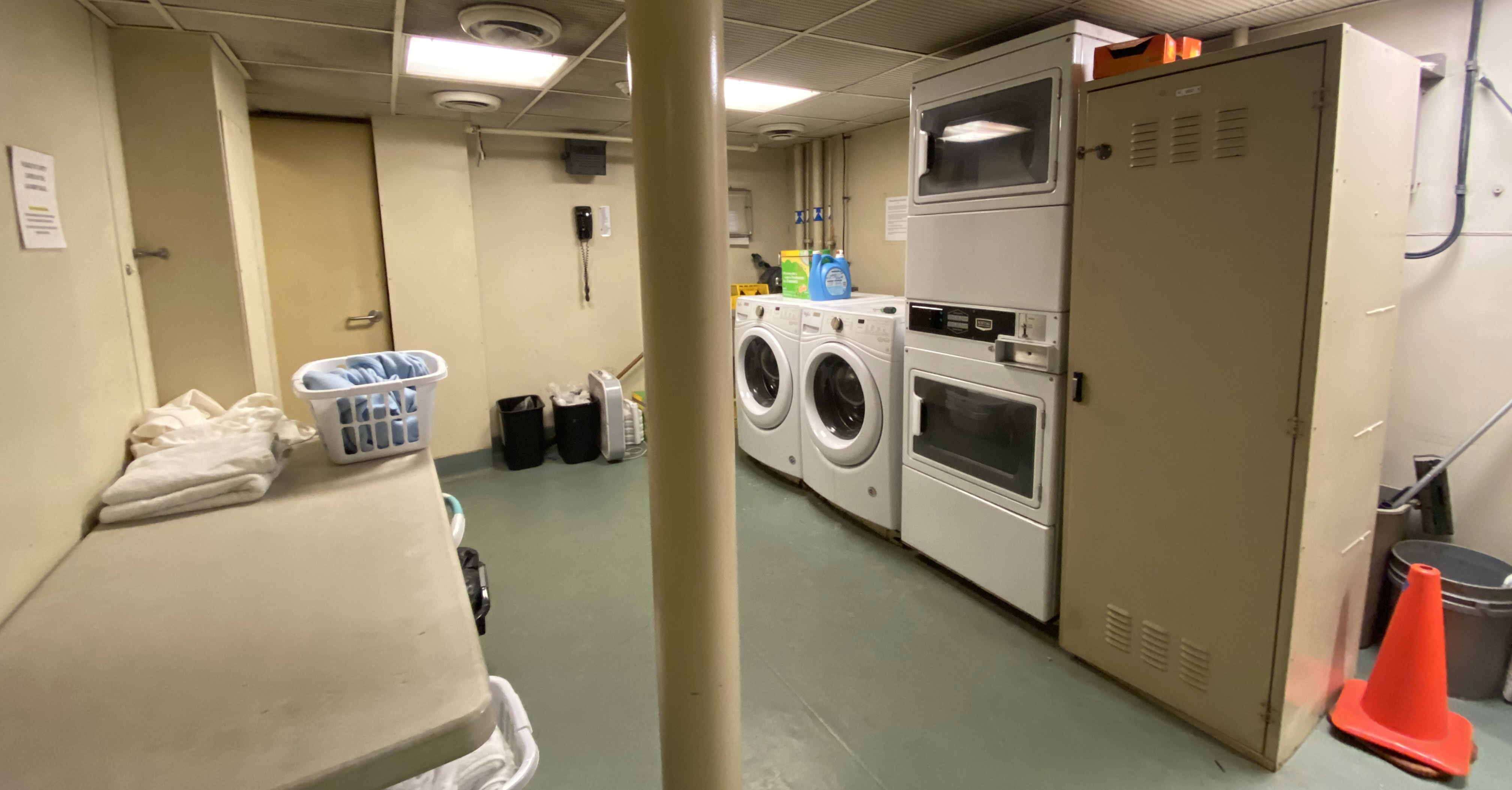
The KM has two washers and two dryers to share amongst the entire ship’s populace. To accommodate everyone onboard, each department has its own designated laundry day. The Science department’s laundry days are Friday–Sunday. Laundry soap is provided, but if you need something special, you should bring your own. To save water, only do full loads. Linens and towels are also provided for you, but you are responsible for washing them regularly during your expedition.

PLATFORM 1

PLATFORM 2

PLATFORM 3

In Port Ship Numbers: (808) 587-8566 | (808) 587-8567
Voice: 011-870-773-234249
Fax: 011-870-783207825
IRIDIUM: 1-480-768-2500 THEN, 881631830418
Cell: (808) 864-0065
Kilo Moana Master: master@km.soest.hawaii.edu
Marine Technicians, both out to sea and in port, can be reached via: SOEST-OTG@lists.hawaii.edu











































